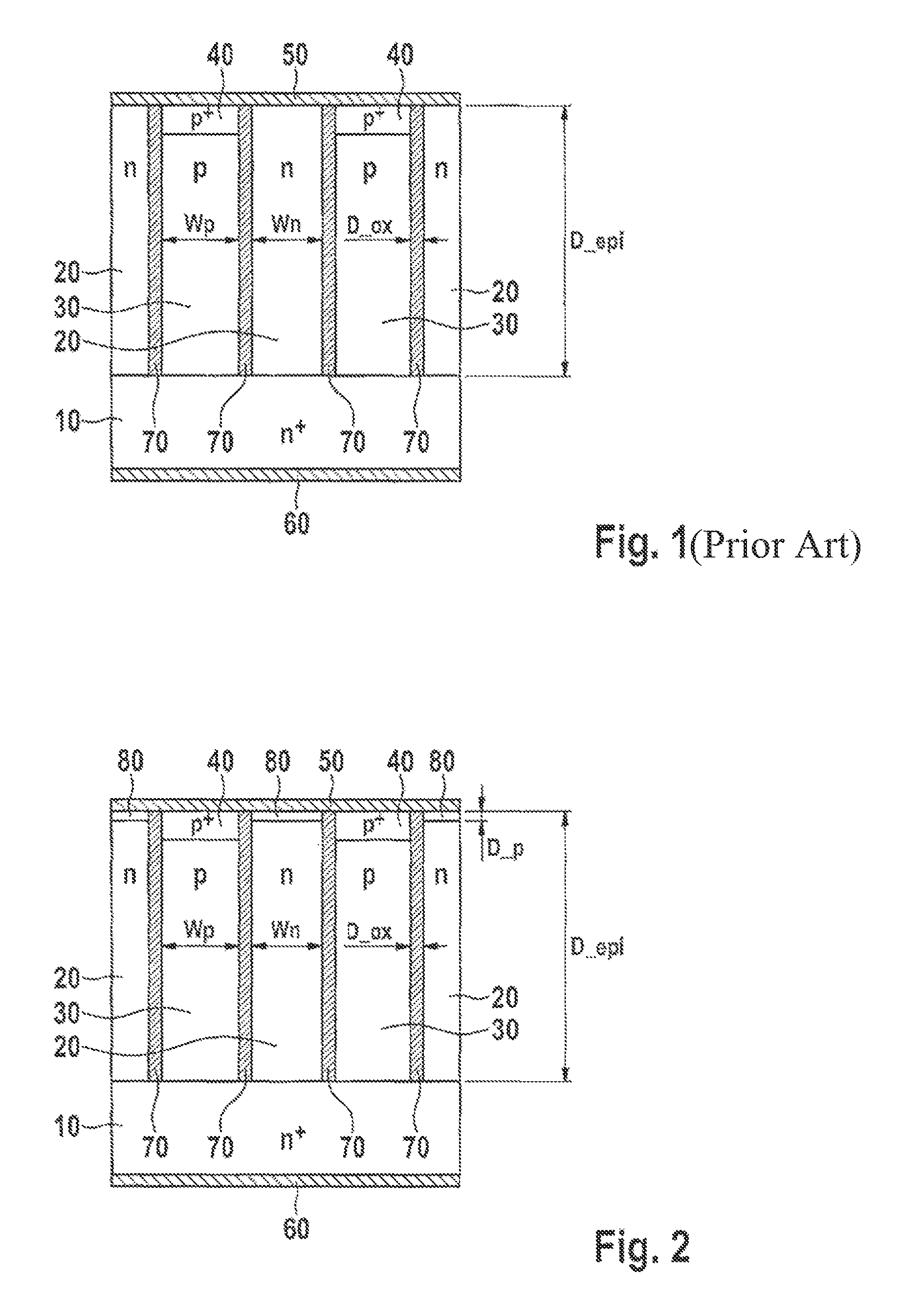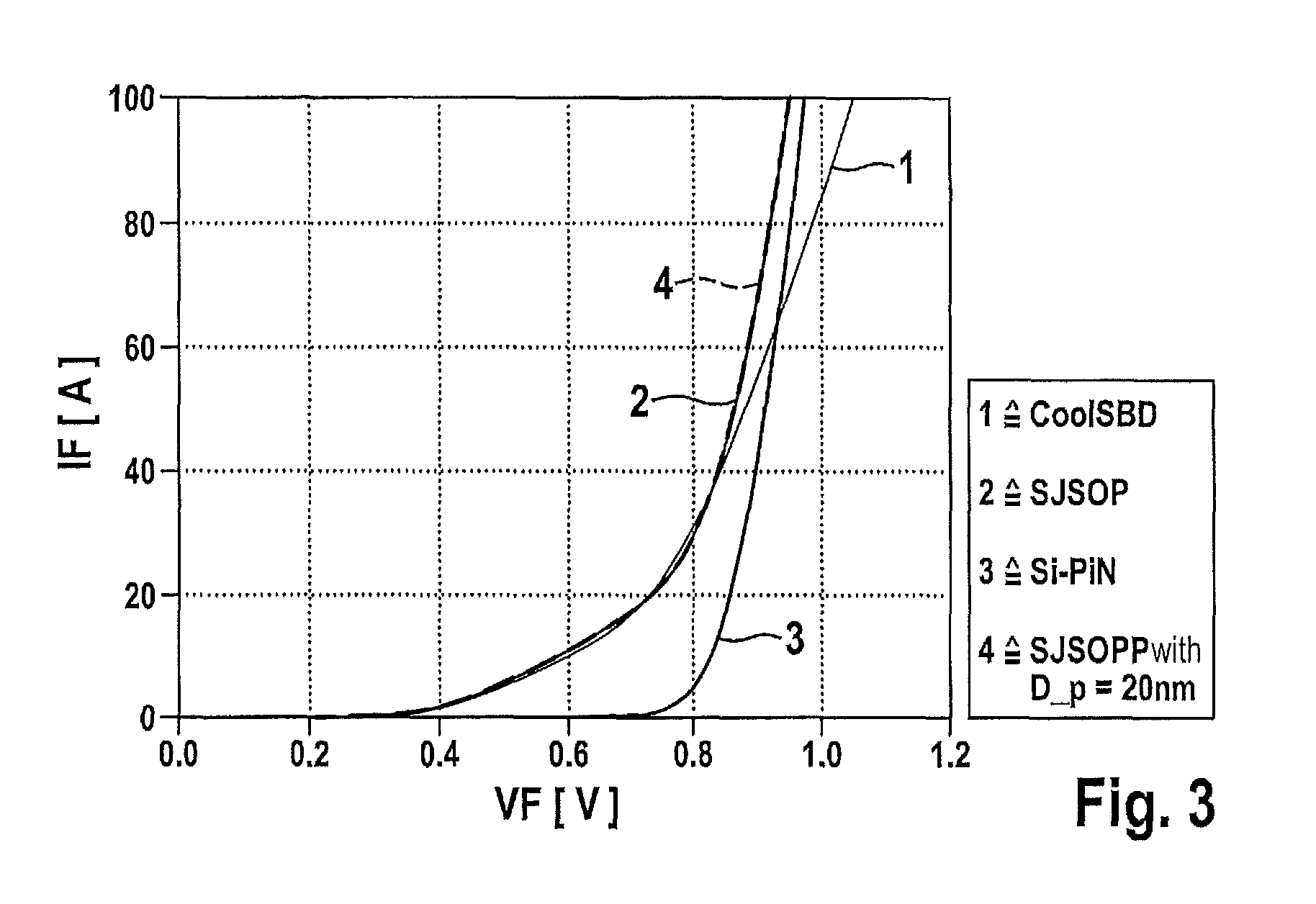Super-junction schottky oxide pin diode having thin P-type layers under the schottky contact
a super-junction schottky oxide and pin diode technology, applied in the direction of basic electric elements, electrical equipment, semiconductor devices, etc., can solve the problems of low forward and reverse losses, high switching losses, forward voltage and low reverse current, etc., to achieve low forward voltage, low reverse current, and favorable switching performance
- Summary
- Abstract
- Description
- Claims
- Application Information
AI Technical Summary
Benefits of technology
Problems solved by technology
Method used
Image
Examples
Embodiment Construction
[0024]FIG. 2 shows a cross-sectional view of a detail of an example semiconductor chip according to the present invention, which is a super-junction Schottky oxide PIN diode having thin p-type layers under the Schottky contact. In the following, such a diode is always referred to as a SJSOPP. A SJSOPP is made up of an n+-type substrate 10, on which an n-type epitaxial layer 20 of thickness D_epi is situated. The n-type epitaxial layer 20 includes etched-in trenches 30, which are filled with p-type silicon and are filled with p+-type silicon 40 on the upper side. The width of n-type regions 20 is Wn, and that of p-type and p+-type regions 30 and 40 is Wp. The dopant concentrations and widths are selected so that the super-junction principle applies. Dielectric layers 70, which are preferably SiO2 layers having a thickness Dox, are provided between the p / p+-type and n-type regions. In this manner, the p-type and n-type regions are galvanically separated from one another.
[0025]A metall...
PUM
 Login to View More
Login to View More Abstract
Description
Claims
Application Information
 Login to View More
Login to View More - R&D
- Intellectual Property
- Life Sciences
- Materials
- Tech Scout
- Unparalleled Data Quality
- Higher Quality Content
- 60% Fewer Hallucinations
Browse by: Latest US Patents, China's latest patents, Technical Efficacy Thesaurus, Application Domain, Technology Topic, Popular Technical Reports.
© 2025 PatSnap. All rights reserved.Legal|Privacy policy|Modern Slavery Act Transparency Statement|Sitemap|About US| Contact US: help@patsnap.com



